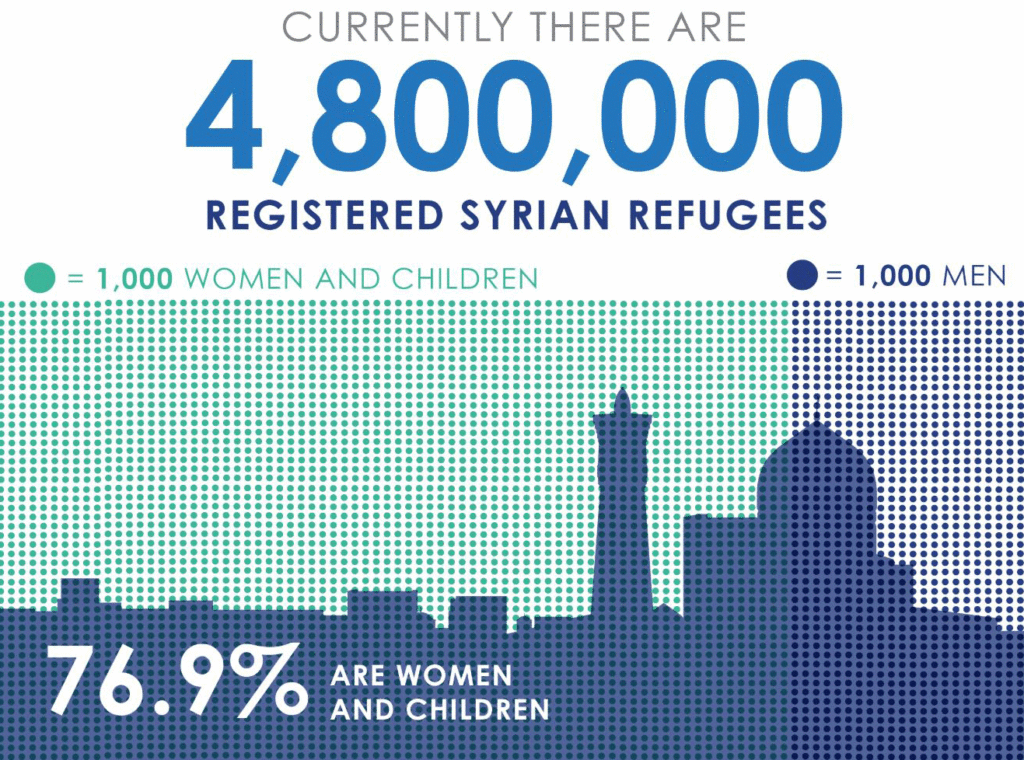Dylan Thomas, Fourth View
Weeks ago, nearly $7 billion was pledged by more than 50 countries at a joint European Union-UN conference to support Syrians both inside Syria and neighboring countries. “In 2017, donors pledged $6 billion in Brussels and in 2018, $4.4 billion. Total fundraising for 2018 reached just over $6 billion by the end of the year. Thursday’s target, was to reach $8.8 billion to go towards the Syria Humanitarian Response Plan, and Regional Refugee and Resilience Plan.”
This comes shortly after the UN endorsed the Global Compact for Safe, Orderly and Regular Migration (also known as the Marrakech Compact on Migration). While 152 countries voted in favor, 5 voted against (Czech Republic, Hungary, Israel, Poland and US), 12 abstained (Algeria, Australia, Austria, Bulgaria, Chile, Italy, Latvia, Libya, Liechtenstein, Romania, Singapore and Switzerland) and 24 weren’t present to vote.
As the “first-ever UN global agreement on a common approach to international migration in all its dimensions,” its objective is to better manage migration “at the local, national, regional, and global levels.” The UN states that, “258 million migrants around the world [are] living outside their country of birth.” Expecting this number to grow, they’re hoping that Member States will adopt a global set of migration standards.
Negotiations began under the Obama Administration in October 2016, with the State Department announcing a withdrawal in 2017 over concerns that it “could undermine the sovereign right of the United States to enforce [its] immigration laws and secure [its] borders.”
The document lists 23 objectives, some of which intend to: “reduce vulnerabilities in migration; address the needs of the communities of origin, transit and destination; fight discrimination and the negative rhetoric against migrants; foster the empowerment of migrants and the communities that take them in; facilitate migrants’ access to decent labor; and contribute to a safe and dignified return and readmission.”
Widely recognized as the first step in achieving a binding contract, the current version is non-binding (meaning, it expresses the UN’s approval or disapproval of something, but a nation doesn’t have to legally comply).
An Infographic Overview of the Syrian Refugee Crisis, Sept. 2016
If the Compact Isn’t the Answer, What Is?
The most far-sighted argument for slower and politically sustainable migration is the impact of climate change. The world seems to be losing the battle to avoid irreversible and catastrophic climate change, which means that migration pressures will intensify in the coming decades…if the Global Compact on Migration is not the answer, what is?
Difficult to Interpret
The compact stays conveniently vague on how the international community should deal with cases in which countries choose not to protect migrants’ rights. The current version is non-binding (meaning, it expresses the UN’s approval or disapproval of something, but a nation doesn’t have to legally comply) and “weak on implementation, monitoring and review mechanisms.”
Reporting on Migration Could Change
The leader of the Conservative Party in Canada had a valid criticism: “attempts to influence how our free and independent media report on immigration issues.” Referring to paragraph 33(c), which suggests states,”promote independent, objective and quality reporting of media outlets… by sensitizing and educating media professionals on migration-related issues and terminology…”
Migration Reporting Won’t Change
Dutch [Member of European Parliament] Marcel de Graaff said that “the agreement sets the precedent for countries to enact law that makes: ‘criticism of migration … a criminal offense.’” It’s false and “any country that took this further and tried to criminalise criticism of migration would likely be breaching human rights legislation.”
Objectives on Health Need Shaping Up
It “stops short of advocating an end to detention for all people or imposing time limits on detention.” And “despite its so-called gender-sensitive approach, reference to sexual and reproductive health rights and safe maternity care, which directly affect neonatal, child, and adolescent health, are conspicuously absent.”



